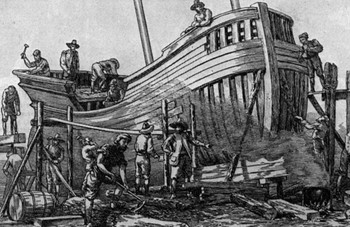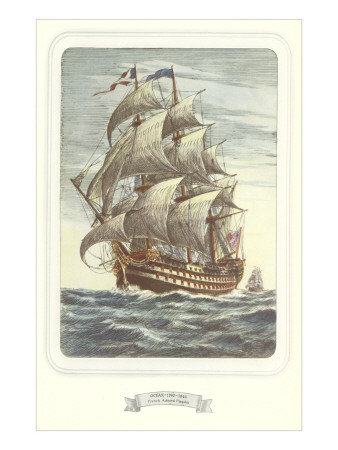In this round, I incorporated a number of notes from our previous playtest. I drastically - and successfully - simplified the process for declaring dividends for bonus points. Also, since the previous game ended just when it seemed to get going, I lengthened the game from a minimum of 11 to a minimum of 15 turns. I made this adjustment despite my general concern about the overall playtime.
 |
| Image source:
http://www.socialstudiesforkids.com |
This afternoon's game went much better than the previous session. Players were definitely motivated to build medium-sized Galleons rather than stick with the cheaper, smaller Brigantines. My youngest son seized on the value of dividends early on and took a quick lead in the dividend points. He and I ended up tied for the most dividend points, and I won the game only because I had a little more cash at the end than he did.
I still have some problems to fix. One of the lingering issues with the game seems to be pace. The game has a lot of potential for players to develop trade routes and shipping capacity, but it always seems to take too long to get to a really profitable position, by which point the game is nearly over. I think perhaps the biggest adjustment I'm going to make is to double the speed of the ships so that trade can turn around profits more promptly within the time span of the game.
 |
| Full-rig clipper ship Image source: http://maritimeheritage.org |
One problem is that now players will know exactly how many turns are left in the game. I don't like end-game effects that skew player decisions. I adjusted victory conditions to give players credit for unsold goods still on ships at the end of the game so that players wouldn't be penalized for loading cargo in the late turns. I want players to run these trading companies as though they will go on for many years after they "retire" - not to build a golden parachute just before a liquidation.
One recurring request from one playtester was flexibility in setting tariff rates, but my concern was that players could shaft each other by jacking up tariff rates just as opponents' ships arrived in the harbor. The solution I reached is to require tariff adjustments to come at the end of a market phase, so that players would be able to re-route shipping to less expensive ports before the next market phase.
 |
| Patrick Henry addresses the Virginia Assembly Image source: Library of Congress |
Overall I'm very pleased with what I learned from this playtesting round. I think I want to make a more polished prototype, take it to a new group, and try it out with the latest modifications. I think my biggest concerns remain pace and game length. Everything else seems to work well. One comment I got was that players really are faced with the kind of money management and investment decisions that 18th century trading companies had to make. That's exactly what I'm hoping to capture, in an approachable and fun way. I don't think I've quite rung the "fun" bell yet, but I think I'm getting there.
I certainly enjoyed playing your game, Paul! The modifications you made definitely increased the fun factor, and I think the game just needs a few more things tweaked. Nicely done!
ReplyDeleteThanks, Kath! I'm very excited about how it's coming together.
ReplyDeletePaul,
ReplyDeleteI've never even read the rules for EIC, but have you considered starting each player with more money at game start might solve some problems?
Interestingly, starting cash is one of the few parameters that hasn't changed in a very long time. But lowering the cost of new ships seems to have been sufficient to motivate investment in subsequent playtests.
ReplyDelete